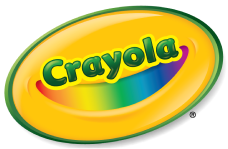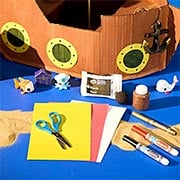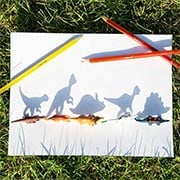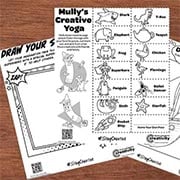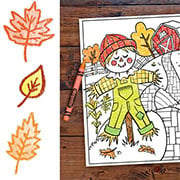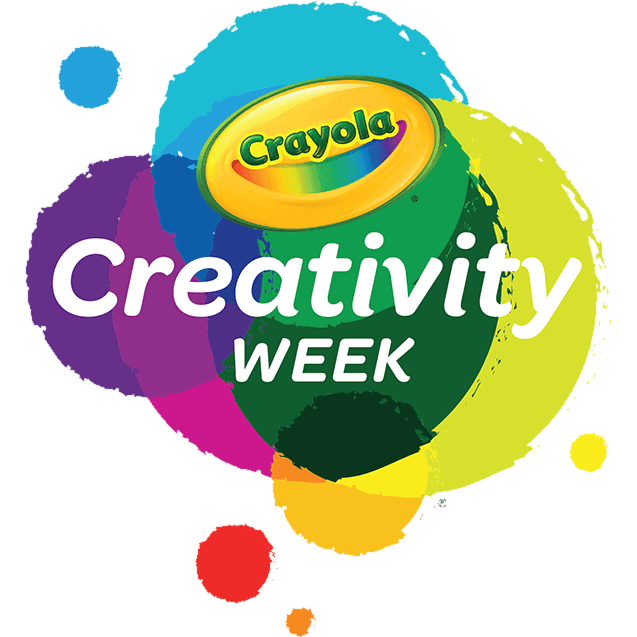The powdery deposit you may see on the surface of your Crayola product is called bloom. This occurs naturally and is perfectly safe.
Bloom appears on Crayola wax‑based products, such as crayons and colored pencils. It occurs when oil contained in the paraffin wax used in these products seeps to the surface and re‑crystallizes into a milky powder. You may also see this with sculptures made with Crayola Air‑Dry Clay as the product ages or is exposed to varying temperatures and humidity. Rest assured, this process is harmless, and the powdery substance and crystallization do not affect the quality or performance of the product. Remove by gently wiping away with a dry cloth.
If you have additional questions, we would love to hear from you! Feel free to call or text us at 1-800-CRAYOLA weekdays between 9 AM and 4 PM Eastern Time. If you would prefer to send us an email, visit our contact us page.
Related Questions
Explore answers to common questions, helpful stain removal tips, and creative ideas for making the most of our art supplies and free resources!
-
Color Wonder is a patented mess-free creative system of inks and paints, developed by Crayola scientists.
Is Color Wonder Safe?
- Just like all Crayola products, Color Wonder is nontoxic. To learn more about the safety of all Crayola products, visit the Crayola Product Safety page.
What makes Color Wonder different from Washable Markers and Paints?
- Color Wonder inks and paints are clear, and colors appear only on special Color Wonder paper. Kids love to watch the colors magically appear, and parents love the fact that Color Wonder inks and paints will not appear on skin, walls, or carpet.
What Color Wonder products are available?
- There are so many ways to create with Color Wonder! With Color Wonder markers, paints, and stampers the possibilities are endless. Learn more about the Crayola Color Wonder line.
Can I reuse my Color Wonder Paper?
- You cannot reuse the same piece of Color Wonder paper twice.
-
As a manufacturer of children's products, safety is our top priority at Crayola. Although our arts and crafts products are nontoxic, we do not recommend using them to make eyeliner, lipstick, or other makeup, and strongly discourage using them this way. Crayola art products were never intended to be used on the skin or face in this manner.
Makeup goes through specific and rigorous testing since it is intended to be used on the skin. Because they were never meant to be used as makeup, our colored pencils, crayons, markers, paint, and all art products have not been tested in the same way a makeup product is and should not be used as a cosmetic. Crayola art materials are not designed, tested, or approved for this purpose.
-
Silly Putty is not intended for use as ear plugs. Known as a "solid liquid", it will not maintain a molded shape. It is composed of a silicone material that becomes softer when exposed to normal body temperature. In addition, changes in atmospheric pressure could force the material to flow deeper into the ear than intended, possibly making contact with the eardrum.
-
Crayola® manufactures two types of chalk, extruded and molded.Extruded chalk, such as Crayola Anti-Dust® White Chalk, primarily contains calcium carbonate. Molded chalk, such as Crayola Children's Chalk (available in white or colors), is a softer chalk, and is not dustless. This type of chalk is recommended for children's chalkboards as well as construction paper, cardboard boxes and paper bags.Crayola Sidewalk Chalk is a molded chalk that is not intended for use on chalkboard surfaces. It does not include calcium carbonate. This product contains Plaster of Paris which has a gritty texture and may scratch your chalkboard.Learn more about Crayola Chalk products at Crayola.com.
-
Crayola® Crayons are made using primarily paraffin wax and color pigment. While the basic ingredients remain consistent across all colors, variations may occur in special effects crayons.
Our crayons are crafted through a process that involves melting paraffin wax and blending it with color pigments. This mixture is then poured into molding machines where it solidifies in four to seven minutes. For a behind-the-scenes look at the Crayola crayon manufacturing process, watch the video "You've Got Crayola Crayons" on YouTube.
